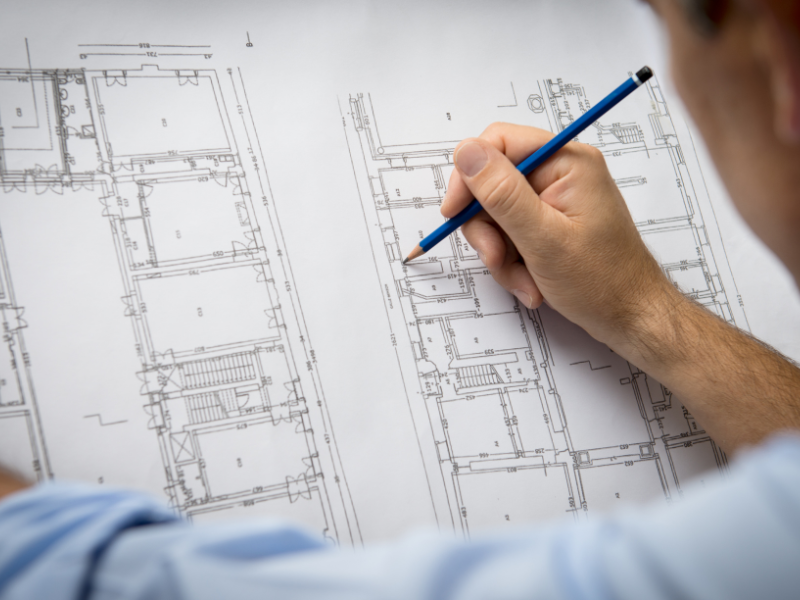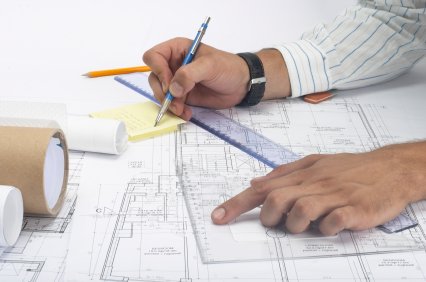Architect Advice on Utilizing Tight Urban Spaces
Wiki Article
Recognizing the Diverse Profession Paths Available for Aspiring Architect
As an aspiring Architect, you have a globe of profession courses waiting for you. Whether you're attracted to traditional architecture or the nuances of sustainable style, there's a particular niche that aligns with your rate of interests.Typical Style: Designing Frameworks and buildings
Standard architecture concentrates on creating buildings and frameworks that blend capability with aesthetic allure. As you discover this field, you'll appreciate the detailed equilibrium between form and function. You'll find out to attract motivation from historic designs, including elements like balance, products, and workmanship. Your layouts can show social heritage, showcasing local practices while meeting contemporary requirements.You'll establish abilities in composing, model-making, and site evaluation, enabling you to picture and communicate your concepts efficiently. Engaging with customers, you'll need to understand their vision and translate it right into feasible layouts.
Moreover, constructing codes and sustainability practices are essential in your work, guaranteeing your structures are safe and eco-friendly. As you expand in your occupation, you'll find possibilities in residential, industrial, or perhaps remediation projects, each offering unique challenges. Embracing conventional style leads the way for a fulfilling career that pays homage to the past while forming the future.
Urban Preparation: Shaping Communities and Public Spaces
As a hopeful Architect, you can play an important role as a metropolitan coordinator, transforming exactly how areas operate and communicate. By using neighborhood involvement approaches, you'll assure that homeowners have a voice in forming their atmosphere. And also, integrating lasting design concepts will help create spaces that not only satisfy today's needs but also protect the future.Function of Urban Planners
While many may believe of engineers as the single dreamers behind buildings, metropolitan organizers play an essential duty in forming the more comprehensive landscape of neighborhoods and public areas. By working together with different stakeholders, you'll aid create parks, transportation systems, and household areas that promote social interaction and availability. Your expertise in spatial layout and community characteristics allows you to visualize future growth while preserving cultural heritage.Neighborhood Involvement Strategies
Efficient area interaction approaches are vital for city planners to ensure that the voices of citizens are heard and valued in the planning procedure. To promote significant discussion, you ought to prioritize open online forums and workshops where community members can reveal their ideas and concerns. By actively paying attention and integrating comments, you'll develop spaces that reflect the neighborhood's needs, eventually leading to even more effective and lasting urban settings.Lasting Layout Concepts
When developing city areas, including lasting style concepts is critical for developing atmospheres that grow both ecologically and socially. You need to begin by concentrating on energy performance, making use of materials that minimize waste and advertise recycling. Think about integrating green spaces, like parks and gardens, to boost biodiversity and boost air top quality. Promoting walkability and public transportation can decrease dependence on cars, promoting a much healthier community.Designing with water conservation in mind is likewise key-- consider rain yards and permeable surface areas to manage stormwater. Entailing neighborhood members throughout the preparation procedure guarantees that the rooms you create meet their demands and motivate social communication. By accepting these principles, you'll contribute to dynamic, lasting urban landscapes that benefit everybody.

Landscape Design: Developing Lasting Outdoor Atmospheres
As you check out landscape architecture, you'll discover vital layout concepts that produce attractive and useful exterior spaces. Sustainable methods play an essential function in making certain these environments grow while lessening environmental effect. Plus, you'll locate a variety of job opportunities that allow you to make a real distinction in how individuals engage with nature.Style Principles in Landscape
Recognizing design principles in landscape design is essential for creating lasting outside settings that integrate with nature. You'll need to contemplate elements like range, proportion, and equilibrium to assure your styles feel natural and inviting. Integrating indigenous plants not just boosts biodiversity however additionally reduces water usage, making your landscape durable. Think of the circulation of room and how people interact with it; pathways and seating locations ought to welcome expedition and leisure. Furthermore, focus on seasonal adjustments, making with materials that enhance the environments year-round (Architect). By prioritizing sustainability and aesthetic appeals, you can develop outside spaces that enhance the neighborhood and advertise wellness. Welcoming these concepts will certainly establish a strong structure for your career in landscape style.Sustainable Practices Introduction
Lasting practices in landscape style not just concentrate on appearances however also focus on environmental wellness and source preservation. By incorporating native plants, you boost biodiversity and decrease the requirement for chemical fertilizers and chemicals. Applying reliable watering systems helps conserve water and lessens drainage, securing nearby communities. You can design spaces that promote dirt health and wellness, such as utilizing natural products and practicing permaculture principles. Furthermore, incorporating green facilities, like rainfall yards and porous pavements, aids in stormwater monitoring and decreases metropolitan heat. When you develop exterior atmospheres with sustainability in mind, you add to a much healthier planet and supply rooms that promote neighborhood connection. Inevitably, these methods ensure your layouts benefit both get redirected here individuals and the setting for years to find.Occupation Opportunities Exploration
With a strong structure in sustainable methods, landscape design offers a selection of occupation courses that allow you to make a purposeful effect on the setting. Urban coordinators often collaborate with landscape architects to create environment-friendly areas in urban settings, improving city livability. If you're passionate concerning education, consider coming to be a landscape style instructor, inspiring future generations.Lasting Layout: Focusing on Eco-Friendly Practices
As you discover your job in architecture, accepting environment-friendly techniques can set you apart in an affordable area. Lasting design concentrates on producing structures that minimize environmental influence while boosting resident health. By integrating renewable products, energy-efficient systems, and lasting structure techniques, you'll contribute to a greener future.Begin by acquiring expertise of green accreditations like LEED or BREEAM, which can boost your qualifications. Think about just how natural light, air flow, and thermal performance can maximize style. Collaborate with engineers and environmental experts to introduce options that reduce waste and preserve resources.
Do not neglect the relevance of neighborhood participation-- engaging regional stakeholders can inspire layouts that balance with the environment. As clients significantly focus on sustainability, your proficiency in environmentally friendly techniques will certainly not just draw in tasks but also accomplish your interest for responsible design. Accept this vital element of the profession, and enjoy your career flourish.
Historic Conservation: Safeguarding and Recovering Social Heritage
While you commence on your building journey, take into consideration the crucial duty of historical conservation in maintaining our social heritage. This area concentrates on the security and restoration of significant buildings, websites, and structures that inform the tales of our past. By involving in historical conservation, you'll assist check my source secure the architectural heritage that forms area identification.As a historical conservation Architect, you'll examine historic relevance and evaluate the problem of frameworks. You'll work closely with historians and conservationists to ensure authentic repair techniques are employed. This profession course permits you to blend imagination with research, enabling you to create services that respect original products and workmanship.
Your work not only adds to sustainability by recycling existing buildings however likewise cultivates a feeling of satisfaction within neighborhoods. Welcoming this course will certainly aid you come to be a guardian of background, protecting the tales and looks that enhance our lives.
Interior Style: Enhancing Indoor Spaces
Historical preservation and interior style both share a commitment to boosting the built setting, yet they focus on various aspects. While historical preservation emphasizes preserving a structure's cultural and historical value, interior architecture zeroes in on enhancing indoor rooms for performance and appearances.As a hopeful Architect, you'll discover that interior architecture allows you to blend imagination with technical abilities. You'll develop areas that not just look excellent yet additionally promote convenience and performance. This area involves comprehending how light, color, and products communicate within an area, influencing mood and functionality.
You'll work on different projects, from residential homes to industrial offices, making certain that each environment fulfills the requirements of its passengers. By focusing on user experience, you can change interiors right into motivating and useful spaces, making a considerable influence on how people engage with their environments. Welcome the opportunity to boost interior atmospheres and form the means individuals function and live.
Industrial Style: Merging Functionality With Visual Appeals
Commercial style plays an essential function in developing items that effortlessly mix looks with functionality, ensuring that what you use daily is not just visually attractive but also functional. As an ambitious Architect, you might involve yourself in this area, concentrating on making every little thing from furnishings to customer electronics. Your job entails comprehending individual needs, products, and making procedures, enabling you to develop innovative solutions that enhance everyday experiences.In industrial layout, you'll commonly work together with engineers, manufacturers, and marketing experts, making sure that your layouts are not only gorgeous yet also practical. You'll discover to balance kind and feature, focusing on functionality without compromising style. By sharpening your abilities in sketching, 3D modeling, and prototyping, you'll be well-appointed to bring your concepts to life. This job course offers a dynamic atmosphere where creative thinking fulfills functionality, making it a fulfilling choice for architects thinking about shaping the items of tomorrow.
Regularly Asked Questions
What Educational Certifications Do I Need to Come To Be an Architect?
To end up being an architect, you'll need a professional level in style, normally a Bachelor's or Master's. Furthermore, you'll need to finish an internship and pass the Architect Registration Examination to practice legitimately.Are There Qualification Demands for Various Building Profession Paths?
Yes, there're accreditation needs for different architectural paths. Architect. You'll require to pass tests, total teaching fellowships, and in some cases seek specialized training, relying on your selected emphasis, like landscape design, metropolitan layout, or historic preservationWhat Software Application Skills Are Necessary for Designers Today?

Exactly How Can I Gain Practical Experience While Examining Architecture?
You can obtain sensible experience by interning at building companies, getting involved in design competitions, volunteering for area jobs, or working together with schoolmates on real-world assignments. These opportunities boost your skills and construct important links in the industry.What Work Opportunities Exist Outside Traditional Style Firms?
You can explore different job possibilities outside typical style firms, like urban preparation, interior design, landscape style, building and construction monitoring, actual estate growth, or even duties in sustainability consulting. Each offers unique difficulties and benefits.Whether you're attracted to standard architecture or the subtleties of sustainable design, there's a particular niche that straightens with your passions.When designing urban rooms, including lasting layout concepts is crucial for developing environments that flourish both environmentally and socially.As you discover landscape design, you'll uncover essential layout principles that produce stunning and practical exterior rooms.Comprehending layout principles in landscape design is vital for developing sustainable outside atmospheres that integrate with nature.In commercial design, you'll often collaborate with marketers, engineers, and manufacturers, making sure that your layouts are not only gorgeous yet also practical.
Report this wiki page